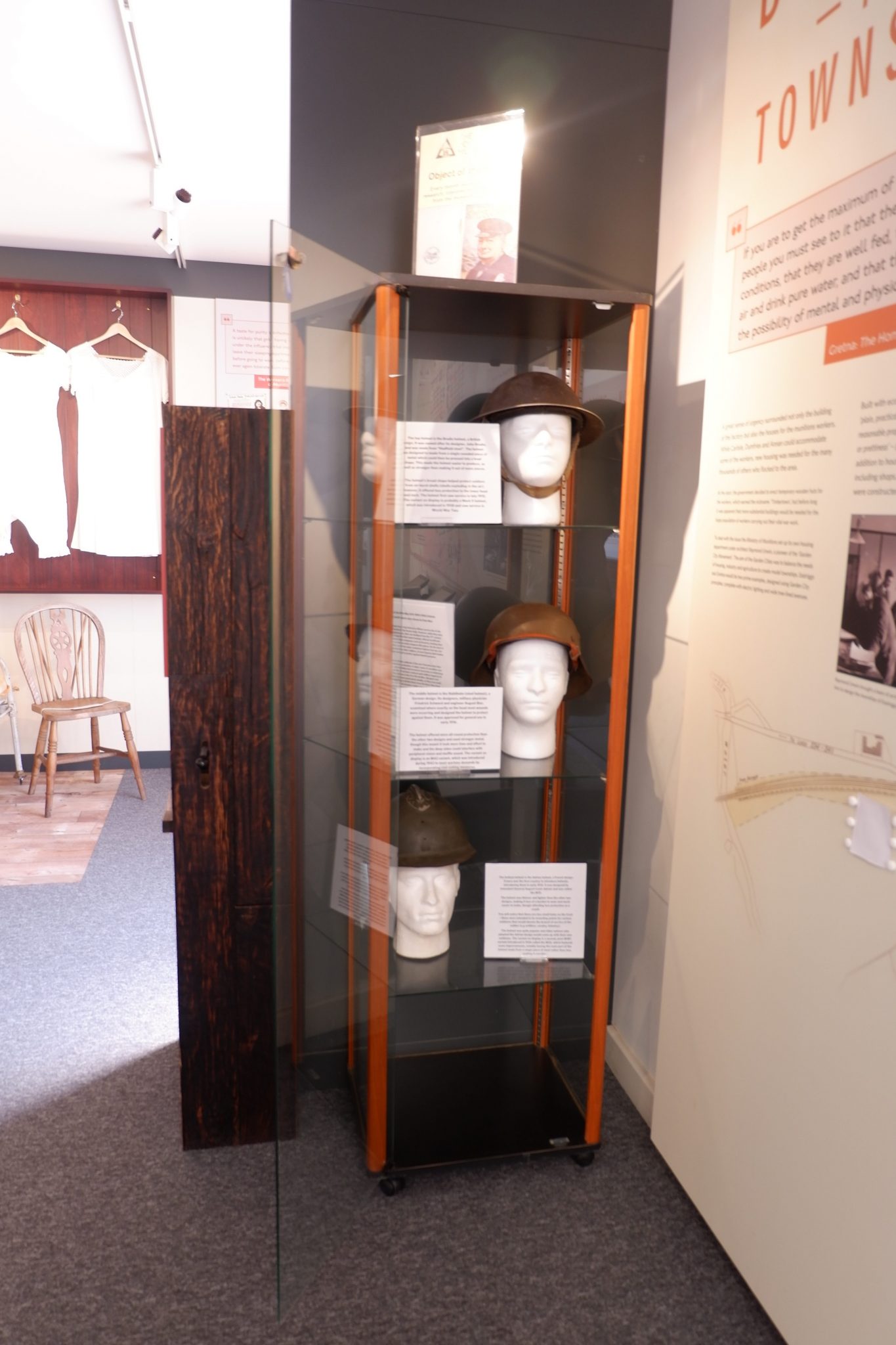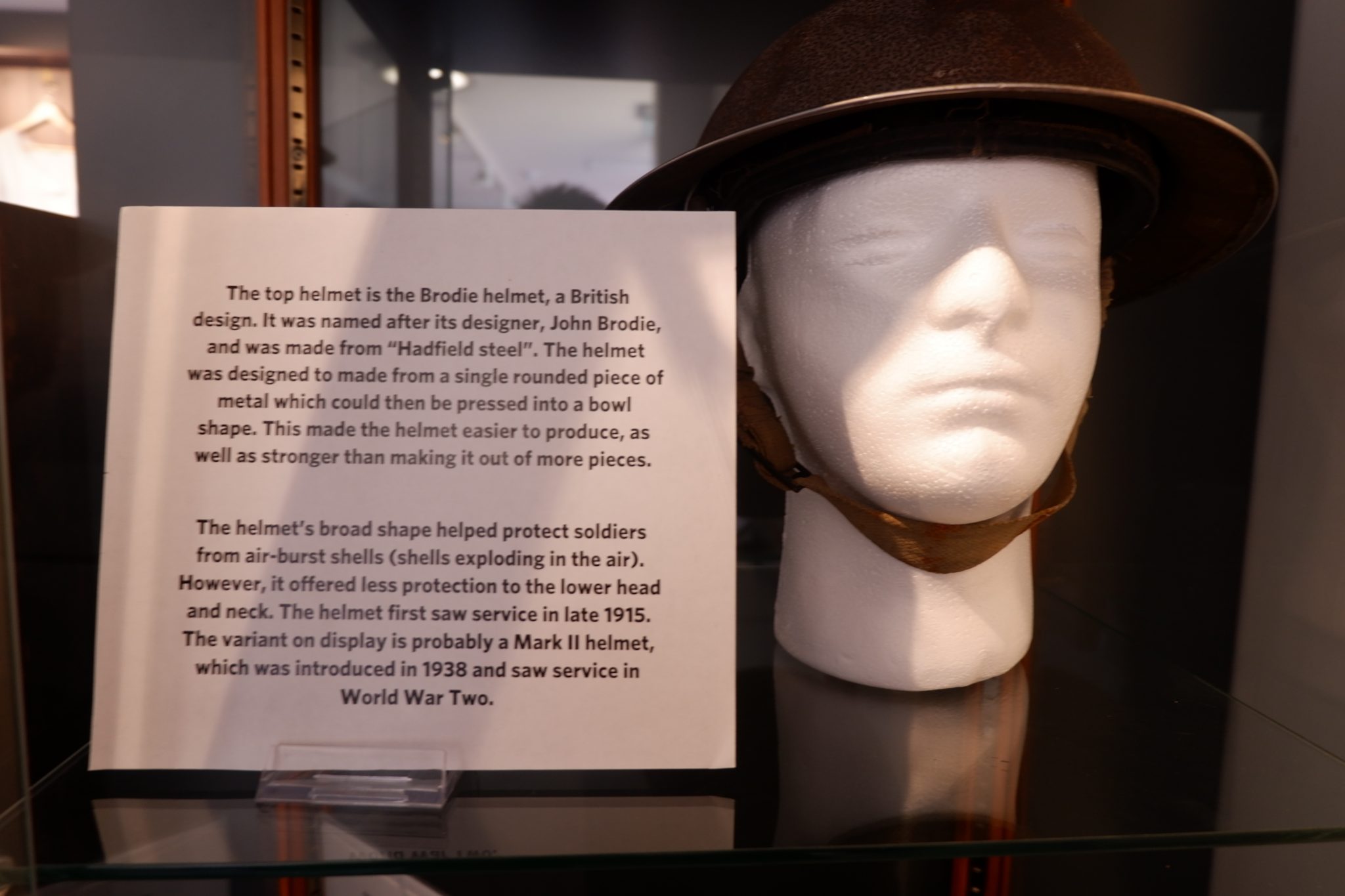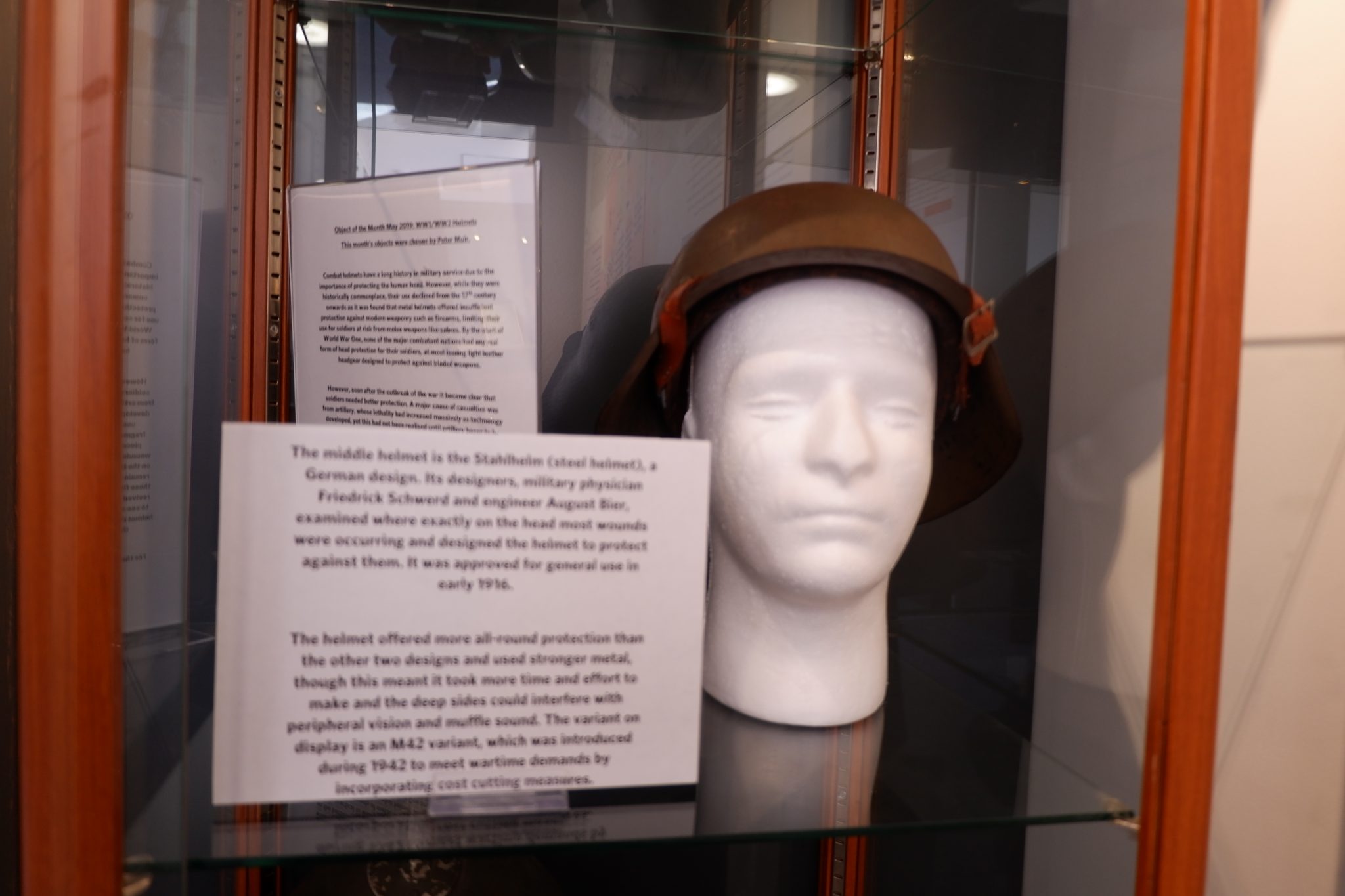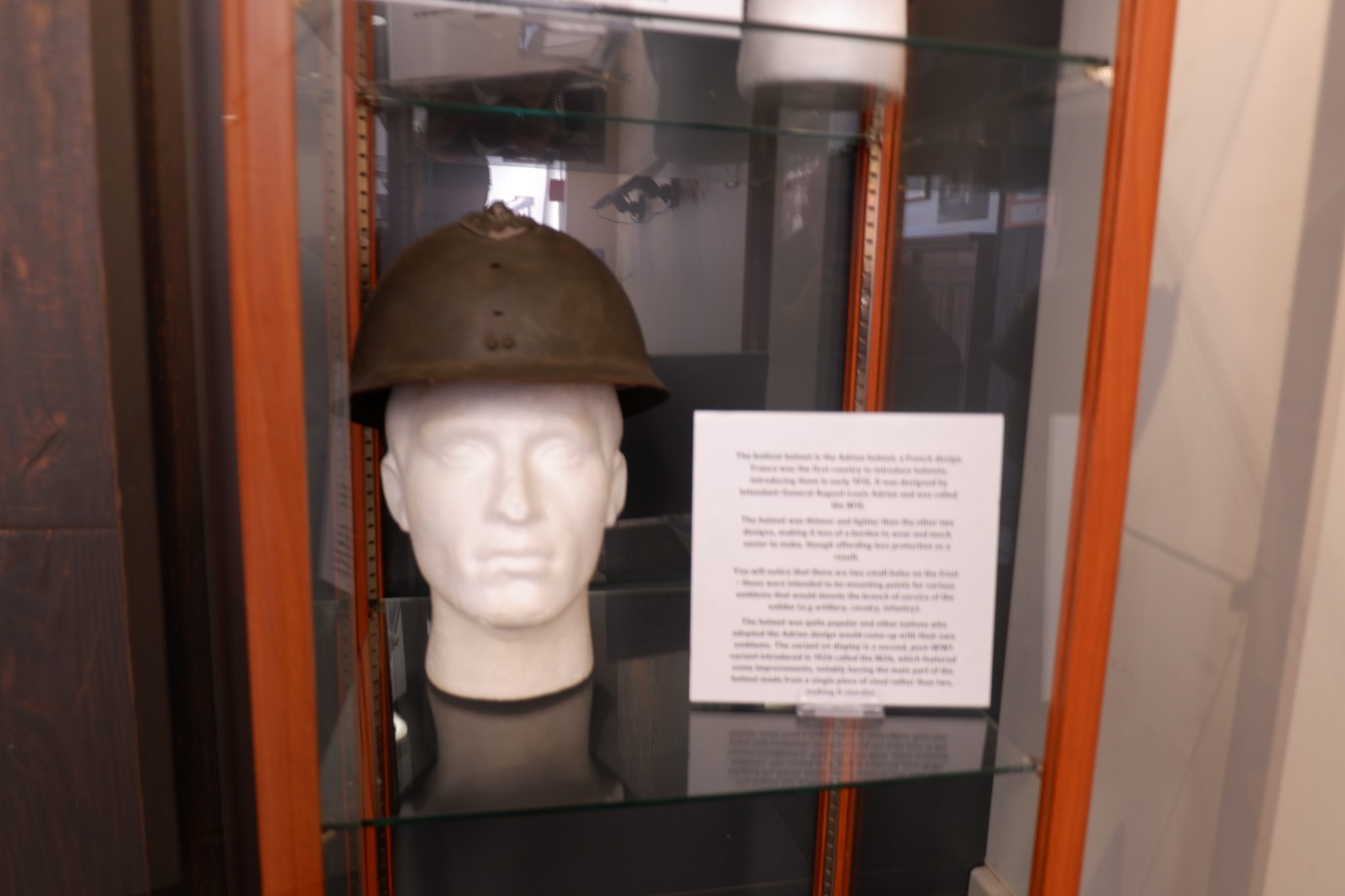
Object of the Month May 2019: WW1/WW2 Helmets
This month’s objects were chosen by Peter Muir.
Combat helmets have a long history in military service due to the importance of protecting the human head. However, while they were historically commonplace, their use declined from the 17th century onwards as it was found that metal helmets offered insufficient protection against modern weaponry such as firearms, limiting their use for soldiers at risk from melee weapons like sabres. By the start of World War One, none of the major combatant nations had any real form of head protection for their soldiers, at most issuing light leather headgear designed to protect against bladed weapons.
However, soon after the outbreak of the war it became clear that soldiers needed better protection. A major cause of casualties was from artillery, whose lethality had increased massively as technology developed, yet this had not been realised until artillery began to be used in the scale seen in the First World War. Shrapnel and fragmentation shells were particularly deadly, as they sent small pieces of metal flying in all directions from the blast, thus head wounds from such attacks became a major cause of injury and death on the battlefield. While no helmet could protect against bullets and remain practical to wear, it was possible for them to protect against these flying fragments of metal. As a result, the warring combatants revived the concept of a combat helmet and the basic idea continues to see service to this day. World War One produced several famous helmet designs who saw service through the war, as well as service all the way to World War Two and sometimes even beyond.
For the object of the month display, Peter has chosen three famous examples.

The top helmet is the Brodie helmet, a British design. It was named after its designer, John Brodie, and was made from “Hadfield steel”. The helmet was designed to made from a single rounded piece of metal which could then be pressed into a bowl shape. This made the helmet easier to produce, as well as stronger than making it out of more pieces.
The helmet’s broad shape helped protect soldiers from air-burst shells (shells exploding in the air). However, it offered less protection to the lower head and neck. The helmet first saw service in late 1915. The variant on display is probably a Mark II helmet, which was introduced in 1938 and saw service in World War Two.

The middle helmet is the Stahlhelm (steel helmet), a German design. Its designers, military physician Friedrick Schwerd and engineer August Bier, examined where exactly on the head most wounds were occurring and designed the helmet to protect against them. It was approved for general use in early 1916.
The helmet offered more all-round protection than the other two designs and used stronger metal, though this meant it took more time and effort to make and the deep sides could interfere with peripheral vision and muffle sound. The variant on display is an M42 variant, which was introduced during 1942 to meet wartime demands by incorporating cost cutting measures.

The bottom helmet is the Adrian helmet, a French design. France was the first country to introduce helmets, introducing them in early 1915. It was designed by Intendant-General August-Louis Adrian and was called the M15.
The helmet was thinner and lighter than the other two designs, making it less of a burden to wear and much easier to make, though affording less protection as a result.
You will notice that there are two small holes on the front – these were intended to be mounting points for various emblems that would denote the branch of service of the solider (e.g artillery, cavalry, infantry).
The helmet was quite popular and other nations who adopted the Adrian design would come up with their own emblems. The variant on display is a second, post-WW1 variant introduced in 1926 called the M26, which featured some improvements, notably having the main part of the helmet made from a single piece of steel rather than two, making it sturdier.


